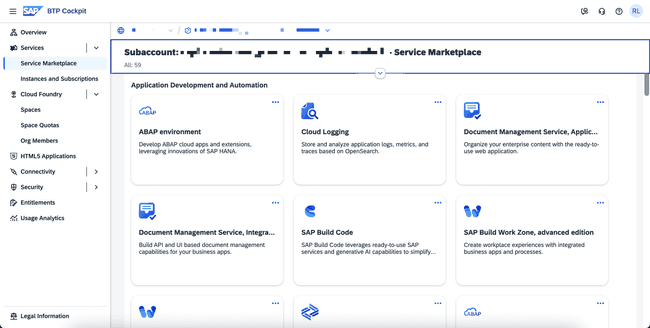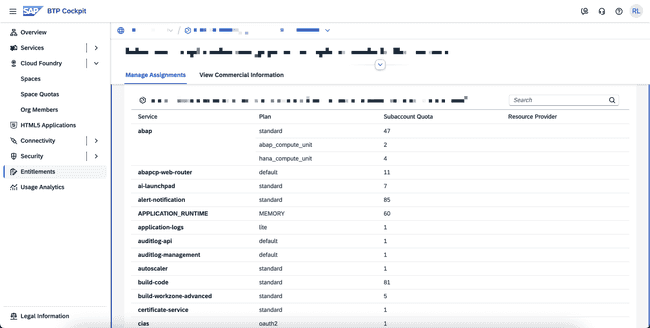Intro to SAP BTP – Basic Concepts
This is an introduction to SAP Business Technology Platform (SAP BTP) formerly known as SAP Cloud Platform.
1. What’s SAP BTP and Hyperscalers
SAP BTP is a multi-cloud Platform-as-a-Service (PaaS) that enables teams to build, extend, integrate, and innovate using generative AI, analytics, automation, and data capabilities across both SAP and non-SAP landscapes. It’s engineered to accelerate development, connect business processes, and infuse AI across enterprise applications. It runs on major hyperscalers such as AWS, Azure, Google Cloud, and Alibaba Cloud—letting you choose the infrastructure that best fits your latency, compliance, and region needs.
2. Cloud Foundry vs Kyma
SAP BTP offers 2 main environments, Cloud Foundry and Kyma:
- Cloud Foundry environment: A proven runtime where you deploy apps (Node.js, Java, ABAP, Python, etc.) within orgs and spaces—ideal for traditional cloud-native development and clearly scoped environments.
- Kyma environment: A Kubernetes-based runtime offering microservices, eventing, and service mesh—perfect for containerized, event-driven, and extensible architectures.
Choose Cloud Foundry for established frameworks and fast deployment; pick Kyma when you need flexible, Kubernetes-style control.
3. Account, Subaccount, and Spaces
SAP BTP’s organizational model flows from:
- Global Account: Your top-level hub—manages entitlements, quotas, subaccounts, and user roles.
- Subaccounts: Isolated project or region-based containers where you provision services and deploy apps.
- Spaces (in Cloud Foundry): Scoped to teams or applications for clean development isolation.
This hierarchy helps developers manage environments (e.g., dev vs prod), region-specific deployments, and team-level autonomy.
4. Applications, Service Instances and Subscriptions
Within a Subaccount or Space, you can:
- Deploy your custom applications.
- Provision service instances such as databases, messaging, integration, or AI services.
- Subscribe to service offerings, binding them to your apps through the BTP cockpit.
This structure streamlines application logic, enables reuse of managed services, and accelerates building business-relevant features.
5. Entitlements and Quotas
- Entitlements allow your global account to access specific service plans.
- Quotas define how much of each service can be used in subaccounts.
From the global account level, you allocate entitlements and quotas to subaccounts (and directories). Within Cloud Foundry, you can further manage usage via space-level quotas.
This setup enables controlled resource consumption, cost governance, and platform stability.
6. User Management and Roles
User roles cascade through the account structure:
- At the Global Account level, you assign members with roles such as Global Admin or Org Admin.
- At the Subaccount level, roles like Developer or Viewer can be granted for scoped access.
- Application-level user management remains separate—internal or external business users are managed within your apps.
This hierarchy ensures secure, fine-grained access control tailored to developer workflows.
Why Developers Should Care
SAP BTP offers:
- Multi-cloud flexibility with seamless hyperscaler integration.
- Choice of runtime (Cloud Foundry or Kyma) for your architecture style.
- Logical separation and clean environments (via global/subaccount/space).
- Rich managed services ready to plug into your apps.
- Governed access with entitlements, quotas, and role-based controls.
Whether you're building with AI, connecting systems, or extending core business logic, BTP provides a powerful and structured developer experience.
References
- What is SAP Business Technology Platform? — sap.com
- SAP BTP hyperscalers and regions — learning.sap.com
- Entitlements and quotas management — help.sap.com
- SAP BTP Administrator Guide - help.sap.com
- Setting Up Authorizations - help.sap.com
- Overview of SAP BTP as a unified, multi-cloud platform — rtcsuite.com


